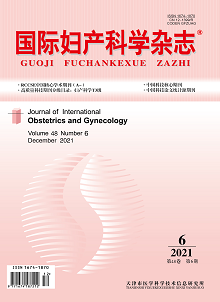Objective:To analyze the distribution characteristics of vaginal microecology and cervical human papilloma virus (HPV) in patients with vulvovaginal pruritus, dryness, pain and/or abnormal secretion, and to explore the relationship between vaginal microecology disorders and HPV infection.Methods: From February 1, 2019 to December 31, 2019, 483 patients with vulvovaginal pruritus, dryness, pain and/or abnormal secretion in the gynecological clinic of the Second Affiliated Hospital of Tianjin University of Traditional Chinese Medicine were selected as the study subjects. Simultaneously, vaginal microecology and cervical HPV were detected and the results were analyzed.Results: Among the 483 patients, only 4 cases had normal vaginal microecology (0.8%) and 479 cases had microecology disorders (99.2%). of which 350 cases (73.1%) had microecological disorders (i.e. vaginal infections) with clear pathogens and 129 cases (26.9%) without clear pathogens. Among 350 cases of vaginal infection, 287 cases (82.0%) were single infection and 63 cases (18.0%) were mixed infection. The single infection of VVC (38.7%, 111/287) and mixed infection (79.4%, 50/63) with VVC had the highest incidence. The proportion of patients with decreased Lactobacillus and decreased H2O2 in vaginal infection was higher than that in vaginal microecological disorder without clear pathogens, and the difference was statistically significant (P<0.05). Of the 483 patients, 162 were infected with HPV, at a rate of 33.5%. The HPV infection rate in vaginal infection (37.1%, 130/350) was significantly higher than that in vaginal microecological disorders without clear pathogens (24.0 %, 31/129). Among them, the HPV infection rate of patients with trichomonal vaginitis (TV), bacterial vaginosis (BV), aerobic vaginitis (AV), VVC, and BV intermediate were 73.3% (11/15), 52.9% (72/136), 34.5% (10/29), 29.2% (47/161) and 27.4% (20/73), respectively. Multivariate regression analysis showed that TV and BV were positively correlated with HPV infection (OR were 5.325 and 3.298, respectively, P<0.05 ).Conclusions: Vaginal microecological disorders are common in patients with vulvovaginal pruritus, dryness, pain, and/or abnormal secretion, and they are susceptible to HPV infection. When vaginal infection occurs (especially TVand BV), the risk of HPV infection is greatly increased.

